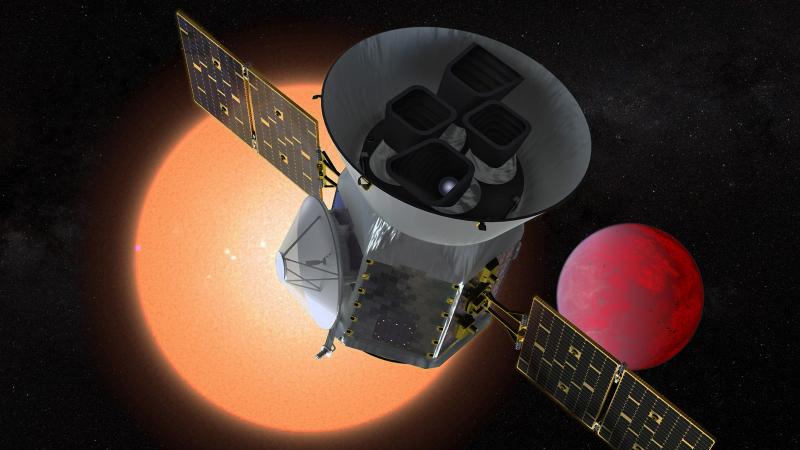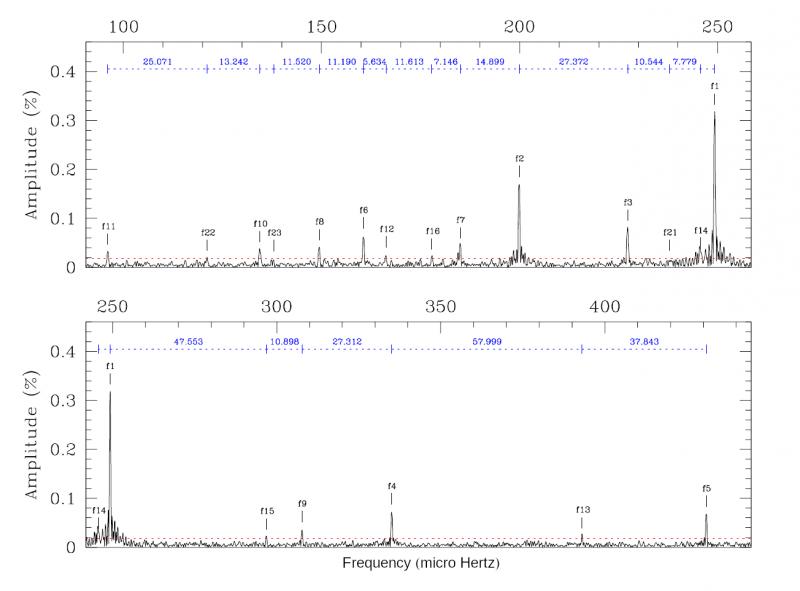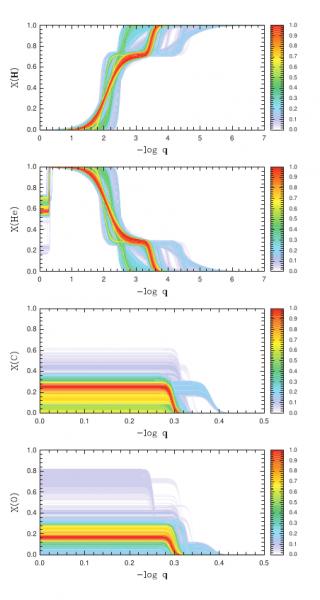In the heart of old stars with TESS
For the past year and a half, NASA’s TESS space mission has been scanning hundreds of thousands of stars to measure their variability and detect transits of exoplanets. Among the instrument’s targets are many elderly stars, some of which, shaken by vibrations, allow the autopsy of their hearts by asteroseismology. A study carried out by a large international collaboration led by a researcher from the Institut de Recherche en Astrophysique et Planétologie exploits the potential of TESS in this field. The analysis reveals details about the inner structure of an evolved compact star, once a red giant, now evolving in a phase of nuclear fusion of helium in its core. This result, published in the journal Astronomy & Astrophysics, paves the way for a better understanding of the physical mechanisms involved in the evolution of stellar cores.

EC 21494-7018 is a small, hot (23,700 K on the surface) and compact (barely 16% of the size of the Sun) star of the sdB spectral class associated with an advanced stage where stars draw their energy from helium burning in the core. Observed by NASA’s TESS satellite among the multitude of targets proposed by an international team of astrophysicists, led by a researcher from the Institut de Recherche en Astrophysique et Planétologie (IRAP) in Toulouse, this star has proved to be a pulsating variable agitated by gravity waves that propagate both on the surface and inside the star. The observed luminosity vibrations could be interpreted using “asteroseismic” techniques, similar to the methods used by geophysicists to reveal the structure of our planet using waves caused by earthquakes. The repercussion of seismic waves propagating through the different terrestrial layers produces a unique signature, which is then captured on the surface and deciphered. Similarly, the luminous variations recorded on the surface of the star carry valuable information about the different stellar layers, especially about its core.

A sdB star usually descends from a star similar to the Sun, but whose envelope almost completely dislocated during the red giant episode, leaving only the remains of the old stellar core, about 0.47 solar mass. But the seismic study of EC 21494-7018 reveals a significantly lighter atypical object, of 0.39 solar mass, involving a progenitor at least twice as massive as the Sun, the only one capable of producing such a small heart. This star would have been formed by an unusual channel to produce this type of object.
Even more interesting, the seismic survey reveals the details of the chemical stratification within this sdB star. In particular, we discover a nucleus where 43% of the helium has already fused to produce carbon (~ 27%) and oxygen (~ 16%). However, at this stage of its evolution, this core appears more massive (about 0.20 solar mass) than those predicted by standard stellar evolution models.
The evolution of helium cores is a stage in the life of stars subject to great uncertainties. The vigour of nuclear fusion reactions involving helium results in a convective nucleus that increases in size over time, but the poorly understood physics of mixing at the boundary of this area makes it difficult to model this evolution. The results obtained for EC 21494-7018 therefore provide essential information to constrain and better understand the physics involved in the evolution of these hearts.
By producing seismic data for a large number of stars similar to EC 21494-7018, the TESS satellite will provide measurements of molten helium cores at all stages of their evolution, from the early stages of nuclear burning to its terminal phase. This “mapping” will be invaluable in better understanding the physical phenomena that control the structure of these cores and how they develop. It will also provide a better understanding of the internal composition of white dwarf stars, which are the residues of these helium cores at the ultimate stage of the life of most stars in the Universe.

Further Resources
- Article published in Astronomy & Astrophysics, December 2019 highlight : « TESS first look at evolved compact pulsators. Discovery and asteroseismic probing of the g-mode hot B subdwarf pulsator EC 21494-7018 », S. Charpinet, P. Brassard, G. Fontaine, V. Van Grootel, W. Zong, N. Giammichele, U. Heber, Zs. Bognár, S. Geier, E. M. Green et al. (22 more) , 2019,A&A,632, A90, DOI: 10.1051/0004-6361/201935395
- See also: https://www.aanda.org/2019-highlights/1745
IRAP Contact
- Stéphane Charpinet – stephane.charpinet@irap.omp.eu






